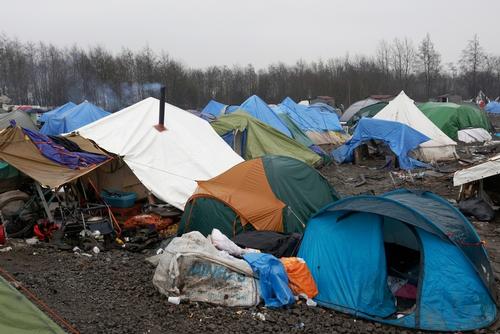Since the beginning of the year, a measles epidemic has been ravaging Katanga Province in the southeast of the Democratic Republic of Congo. The Office for the Coordination of Humanitarian Affairs (OCHA) declared around 16,500 cases of measles and more than 267 deaths in the first six months of the year. Having led the response during the last few months, Médecins Sans Frontières (MSF) is stepping up its support to the Ministry of Health, providing free medical care for patients, carrying out vaccination campaigns for children and strengthening epidemiological surveillance.
In Katanga Province, MSF stepped into action in March in the Malemba Nkulu health zone. As the epidemic spread, the organisation soon had to extend its activities to other zones including Kikondja, Mukanga and Lwamba. “This is the most serious epidemic Katanga has seen since 2011. We are adapting our current activities, and drawing on our experience from 2011. In one year, we have vaccinated almost 1.5 million children and treated more than 50,000 cases in 31 of the 68 health zones in Katanga Province,” explains Jean-Guy Vataux, MSF Head of Mission in DRC. “But people have difficulty accessing treatment, and it is also likely that cases are under-reported, so the current epidemics may well be more serious than they appear. It is important to act as quickly as possible, so that we don’t end up in the same situation as in 2011, or an even more serious one.”
Since March, MSF has also been working in the South Kivu, Equateur and Maniema provinces. In total, the organization has already treated nearly 12,200 patients and vaccinated more than 287,000 children aged between six months and 15 years as a preventive measure or in response to the epidemic. More than 85% of the patients treated and more than half of the children vaccinated were in Katanga.
In Katanga, epidemics are recurring despite vaccination campaigns
The major challenge remains to contain this measles epidemic. In Katanga, a territory roughly the size of Spain, teams face a number of difficulties. Logistics is a challenge, as access to certain areas is very difficult or even impossible. The roads are in very bad condition, some sites are only accessible by motorcycle or boat and inhabitants are spread over a wide area. The general state of health of the population is poor, and children – exposed to malnutrition, malaria, tuberculosis and respiratory infections – are particularly vulnerable. These are aggravating factors that are increasing the mortality rate of this measles epidemic.
“Despite successive vaccination campaigns and the number of children supposed to be protected, measles is virtually endemic in Katanga and epidemics are recurring. This is due to the scarcity of resources combined with major difficulties in implementing routine vaccination programmes and emergency campaigns. There are a number of reasons for this: shortage of funds, running out of vaccines, problems maintaining the cold chain, which is only possible in major towns and cities, and a lack of qualified human resources. Health authorities, UN humanitarian agencies and donors need to mobilize more resources – medical, logistical, financial, material and human – to help respond to the current epidemic,” adds Jean-Guy Vataux.
MSF teams are continuing to be deployed in new health zones such as Kabalo, one of the most severely affected regions in Katanga, and have begun treating patients.
MSF has been providing free healthcare for the Congolese population since 1981. Today, the organization works in several areas throughout the country. Over 500 international and national staff are currently deployed to respond to the measles epidemics.




